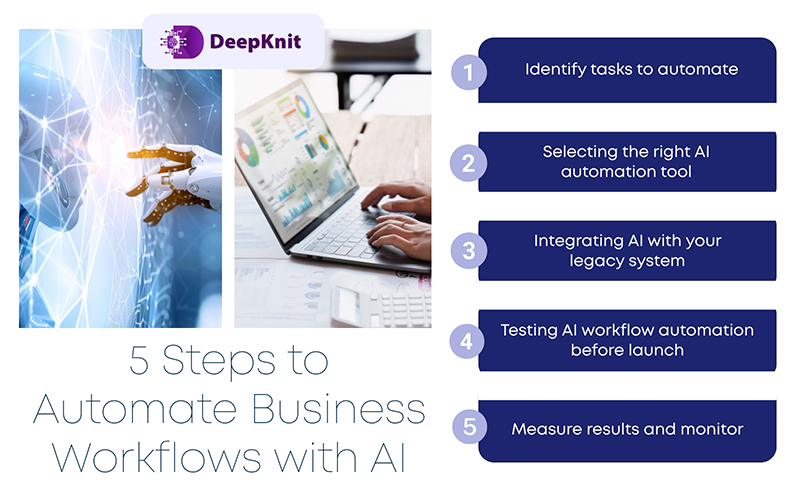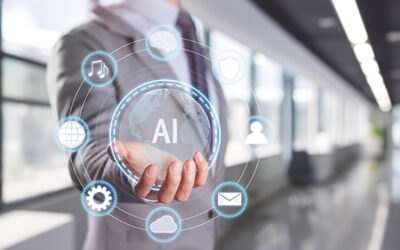Whatever your industry, AI workflow automation will go a long way in streamlining your process to achieve optimum and meaningful results, while reducing errors and costs. Businesses can scale their operations and grow at an enhanced pace with the adaptation of AI to automate their processes.
What Is AI Workflow Automation?
While the concept of artificial intelligence (AI) was first proposed as early as the late 1950s, its full potential was not realized at the time, or the efforts needed to make machines as cognitive and intelligent as humans was largely underestimated, and this led to media criticisms, decline in interest from governments and investors, and what followed in the early 1970s is what came to be known as the first ‘AI Winter’.
Interest and investment in the field picked up by the early 1980s and the industry grew to be a billion-dollar industry. However, a second spell of ‘AI Winter’ is what followed after investors’ enthusiasm waned in the 1990s. Nonetheless, research and funding continued albeit under other names.
The onset of the 21st century saw the game shifting gears. With the availability of improved computer hardware, the processing power of machines increased. This, coupled with the availability of vast amounts of data sets, led to the application of machine learning and solid mathematical approaches to a wide range of problems in academia and industry, and ensured a renewed interest in AI.
With the introduction of deep learning methods and the debut of transformer architecture in 2017, AI architects were able to produce remarkable generative AI applications, and there has been no looking back since then.
AI workflow automation is the integration of AI and automation technologies to streamline and optimize your rule-based and repetitive tasks or complex tasks, and get work done faster for you with minimal error. This enhances efficiency, decision-making capabilities, and also helps in scaling operations of your organization.
How to Automate Your Organization’s Workflow Using AI?
Now that you’ve an overview of what AI automation is and the advantages it can bring to your organization, the question is where to begin? Here’s a split up of 5 basic steps to automate business workflows with AI:
- Identify tasks to automate
This is the first step in integrating AI-powered automation into your business. Evaluating the processes involved, you would be able to identify the tasks that you spend most of your time and effort in – be it scheduling meetings, sending follow-up mails, planning social media posts or analyzing customer data. These are best suited for intelligent automation to begin with. With AI taking care of such time-consuming but repetitive tasks, you’d be left with time for more critical and creative processes of your business.
- Selecting the right AI automation tool
There are a multitude of AI automation tools out there in the market but you need something that aligns more with your needs – customer data analysis, content creation, financial documentation and predictive analysis or something that helps you with streamlining customer engagement. Look for recommendations from trusted forums to learn how to choose AI tools for workflow automation, and make sure they are also scalable to accommodate your future growth. Finding the right tools that integrate smoothly into your existing workflow system is most important.
- Integrating AI with your legacy system
The third and the most important step in the process is the integration of your chosen AI tools into your legacy workflow system. Many of the AI automation tools come with plug-and-play integrations for the most popular platforms — whether it’s automatically syncing customer data from your CRM or analyzing and compiling large sets of customer data, pre-built integrations give you peace of mind and save a lot of time. Nevertheless, if you need more customization, you can choose Application Programming Interfaces (APIs) that make data and functionality from one application or website available for use in other applications. APIs let you customize AI workflows best suited to the needs of your business.
- Testing AI workflow automation before launch
Just as in any other areas of function, testing of your AI workflow before you roll it out for all to use is important. You can test it in controlled environment with real data to check if it has integrated properly with your other systems, or whether it has any bugs to fix. Catching issues early is key, so that you can reengineer your automated workflow to best serve you.
- Measure results and monitor
The 4 above mentioned steps are only half the work done, if you want to see benefits out of your AI automated workflow. You need to measure results regularly to see if it is meeting your expectations and optimize it accordingly. For this you need to set up regular AI audits and continually adjust your approach to make the most of your AI automation. You must not forget that AI is always learning and improving and you must be ready to fine-tune as you scale.
Leveraging DeepKnit AI for Intelligent Workflow Automation
AI has significantly changed the way automation is implemented across industries. AI-powered workflow automation gives you the liberty to put your routine tasks in auto-mode and direct your efforts towards more strategic functions of your business.
Want experienced AI talents to help you automate your workflow? Check DeepKnit’s AI Agents.
Improve your business process with smart automation.
Check out DK’s AI Agent Development Services.
Get Started Today





